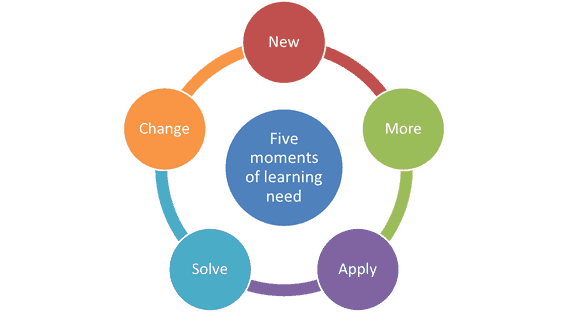Maximize Application of the Five Moments of Learning Need with Audience Response Technology
One of the most talked-about business strategies to emerge in the last decade is known as the Five Moments of Learning Need. Designed by performance support experts Bob Mosher and Dr. Conrad Gottfredson, the training framework suggests that there are five consistent steps to learning:
- Learning for the first time
- Learning more by building upon existing skills and knowledge
- Remembering and applying what has been learned
- Problem solving when things go wrong
- Adapting when things change
Reinforced Learning Models
The first two steps in this model represent traditional learning as most of us know it. These steps are often covered by the methods anyone will use to gain new knowledge – classes, seminars, online tutorials, or knowledge shared from experts in our social or professional circle.
The subsequent three are functions of learning support that can be provided by a business or organization to its employees.


Ongoing, Interactive Learning Model
What this structure changes about our assumptions regarding learning is the idea that learning only happens in the first two stages of the process. Instead, as indicated by the Five Moments of Need model, learning is an ongoing process that should be fostered and encouraged to help individuals and teams maximize the knowledge they posses.
The use of audience response technology fits into several stages of this process. Immediately obvious is step one, when individuals are introduced to completely new information through a class, seminar or e-learning environment.
Learn. Retain. Repeat.
But the usefulness of audience response continues along the spectrum of the Five Moments of Learning Need. Once learners have had the opportunity to apply their skills, they will likely encounter challenges that require additional training for them to overcome step four – when things go wrong.
This corrective step again allows for an opportunity for learners to share through audience response and polling technology the problems they’ve encountered, then work through them with the instructor and fellow participants, leading to a more effective progression to step five.


